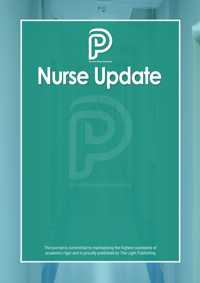Maternal Self Efficacy (MSE) Affects The Incidence of Stunting in Infants Under Five Years of Age (Toddlers)
Keywords:
Maternal Self Efficacy, Incidents, Infants, toddlersAbstract
Background: Stunting Incidents was infants with chronic nutritional problems which was caused by many factors including, namely socio-economic conditions, maternal nutrition during pregnancy, pain in infants and lack of nutritional intake in infants. One of the nutritional problems faced by infants today was Stunting or the incidents of short infants.
Objective: The aim was to determine Maternal Self Efficacy (MSE) Affects the Incidents of Stunting in Infants Under the Age of Five (Toddler).
Method: uses Quantitative with a Cross-Sectional approach with a population of 200 and 132 respondents. Data collection tecniques Nonprobability Sampling with Purposive Sampling. Data analysis used was univariate analysis, bivariate using the Spearman Rank Test.
Results: the research carried out showed that the highest category of Maternal Self Efficacy was moderate (47,7%) of respondent. The highest incident of Stunting was in the category of very short (41,7%), short (28,8%), and normal (29,5).
Conclusion: that there was a relationship between Maternal Self Efficacy and the Incidents of Stunting in Infants Under the Age of Five (Toddlers) with an r value of 0,679 and a P-Value (0,000) < ɑ (0,05).
References
Alfiah, S. N., & Setiyabudi, R. (2020). Hubungan Pola Asuh Pemberian Makan Dan Status Ekonomi Dengan Kejadian Balita Pendek. Human Care Journal, 5(3), 742. https://doi.org/10.32883/hcj.v5i3.767
Amalia, M., Anggraini, Y., & Satria, D. (2022). Faktor Yang Berhubungan Dengan Stunting Pada Balita Usia 12-59 Bulan di Kenagarian Balingka. Jurnal Ners, 6(1), 40–45. https://doi.org/https://doi.org/10.31004/jn.v6i1.3872
Anastasia Terok, K., & Pongantung, H. (2023). Pencegahan Stunting Dengan Peningkatan Efikasi Diri Ibu Melalui Health Coaching Di Kelurahan Taratara. Journal | Watson Journal of Nursing, 1(2), 16–27.
Arifin. (2025). Hubungan Dukungan Suami Dan Dukungan Keluarga Dengan Asi Ekslusif Pada Anak Stunting. Jurnal Keperawatan, 17(2549–8118), 375–382.
Diyah, L., & Rosanti, A. (2024). Implementasi Kebijakan Percepatan Penurunan Stunting Di Kabupaten Rembang Provinsi Jawa Tengah. Jurnal Inovasi Riset Ilmu Kesehatan, 2(3), 213.
Dwi, N., Putri, P., Hadju, V., Indriasari, R., Hidayanty, H., & Mansur, M. A. (2023). Gambaran Self Efficacy Ibu Dalam Pemberian Mp-Asi Dan Kejadian Stunting Pada Baduta. The Journal of Indonesian Community Nutrition, 12(1), 27–37.
Fatimah, N. (2021). Hubungan Antara Pengetahuan Dan Efikasi Diri Ibu Tentang Pencegahan Stunting Pada Anak Usia 6-24 bulan. Universitas Gajah Mada, 5–6.
Fuad, W., & Lahdji, A. (2023). Hubungan Pengetahuan dengan Perilaku Pola Asuh Pendamping Makan Balita Stunting di Wilayah Kerja Puskesmas Poncol Menurunkan Prevalensi Stunting di Indonesia di Bawah 14% Pada 2024. 6, 812–819.
Hastuty, M. (2020). Hubungan Anemia Ibu Hamil Dengan Kejadian Stunting Pada Balita Di UPTD Puskesmas Kampar Tahun 2018. Jurnal Doppler, 4(2), 112–116.
Hikmah, N., & Anwar, I. (2023). Upaya Peningkatan Pengetahuan Masyarakat Tentang Stunting Dan Cacingan Di Kelurahan Kambu Kecamatan Kambu Kota Kendari …. Mosiraha: Jurnal Pengabdian Farmasi, 2(1), 13–19.
Nasution, A. N., Maimunah, R., & Sitorus, N. Y. (2024). Hubungan Pengetahuan Ibu Terhadap Kejadian Stunting Pada Balita Di Puskesmas Pagambiran. Excellent Midwifery Journal, 7(1), 47–53.
Nisa, W. K., & Azinar, M. (2024). Karakteristik Keluarga Berisiko Stunting pada Anak Usia 7-24 Bulan di Wilayah Kerja Puskesmas Bandarharjo dengan Pendekatan Case Control. Kritis, 33(1), 17–36.
Orif, F., Rs, D. I., & Rahayu, P. (2022). Pengaruh edukasi pembuatan nutrisi dengan bahan lokal terhadap self efficacy ibu di dusun bulurejo kabupaten gunung kidul yogyakkarta. 9–11.
Paramesti, K. F., Balgis, B., & Putri, A. A. A. K. E. N. (2024). Hubungan Inisiasi Menyusui Dini, ASI Eksklusif, dan Pengetahuan Ibu terkait Nutrisi dengan Kejadian Stunting. Jurnal Kesehatan Masyarakat Indonesia, 19(1), 21. https://doi.org/10.26714/jkmi.19.1.2024.21-27
Pertiwi, F. D., Hariansyah, M., & Prasetya, E. P. (2019). Faktor Risiko Stunting Pada Balita Dikelurahan Mulyaharja Tahun 2019. Promotor, 2(5), 381–391. https://doi.org/10.32832/pro.v2i5.2531
Rachmawati, D., Marcelina, L. A., & Permatasari, I. (2021). Hubungan Dukungan Sosial Dengan Self-EfficacyIbu Postpartum. Jkep, 6(2), 160–172. https://doi.org/10.32668/jkep.v6i2.761
Rahmalia, F. Y., & Azinar, M. (2024). Hubungan Riwayat Pemberian Asi Eksklusif Dengan Kejadian Stunting Pada Anak Usia 6-24 Bulan. AKSELERASI: Jurnal Ilmiah Nasional, 6(1), 43–52. https://doi.org/10.54783/jin.v6i1.881
Sania, M., & Subiyatin, A. (2024). Hubungan Pengetahuan Mpasi Dan Self Efficacy Dengan Stunting Pada Balita Di Puskesmas Kelurahan Pamulang Program Studi Sarjana Kebidanan Universitas Muhammadiyah Jakarta. Jurnal Ilmiah Bidan, 8(3), 1–11.
Setiyawati, M. E., Ardhiyanti, L. P., Hamid, E. N., Muliarta, N. A. T., & Raihanah, Y. J. (2024). Studi Literatur: Keadaan Dan Penanganan Stunting Di Indonesia. IKRA-ITH HUMANIORA : Jurnal Sosial Dan Humaniora, 8(2), 179–186. https://doi.org/10.37817/ikraith-humaniora.v8i2.3113
Suarnianti. (2020). Faktor Risiko Stunting : Literatur Review. Jurnal Ilmiah Kesehatan, 15(2), 144–147.
Suasono, A. &. (2021). Peningkatan Kesadaran Hukum Masyarakat Terhadap Pencepatan Stunting. Tien Mastina, 4(4), 7855–7861.
Terok , Suryati, Y., Kulsum, D. U., Maryati, I., & Rudhiati, F. (2022). Health Coaching Terhadap Perilaku Dan Efikasi Diri Ibu Dalam Pencegahan Stunting. Jurnal Keperawatan Silampari, 6(2581–1975), 387–399.
Yuwanti, Y., Mulyaningrum, F. M., & Susanti, M. M. (2021). Faktor – Faktor Yang Mempengaruhi Stunting Pada Balita Di Kabupaten Grobogan. Jurnal Keperawatan Dan Kesehatan Masyarakat Cendekia Utama, 10(1), 74. https://doi.org/10.31596/jcu.v10i1.704
Downloads
Published
Issue
Section
License
Copyright (c) 2025 Rizky Amanda Sari (Author)

This work is licensed under a Creative Commons Attribution 4.0 International License.
Authors who publish with this journal agree to the following terms:
Authors retain copyright and grant the journal right of first publication with the work simultaneously licensed under a Creative Commons Attribution License that allows others to share the work with an acknowledgement of the work's authorship and initial publication in this journal.
Authors are able to enter into separate, additional contractual arrangements for the non-exclusive distribution of the journal's published version of the work (e.g., post it to an institutional repository or publish it in a book), with an acknowledgement of its initial publication in this journal.
Authors are permitted and encouraged to post their work online (e.g., in institutional repositories or on their website) prior to and during the submission process, as it can lead to productive exchanges, as well as earlier and greater citation of published work (See The Effect of Open Access).

This work is licensed under a Creative Commons Attribution 4.0 International License.



